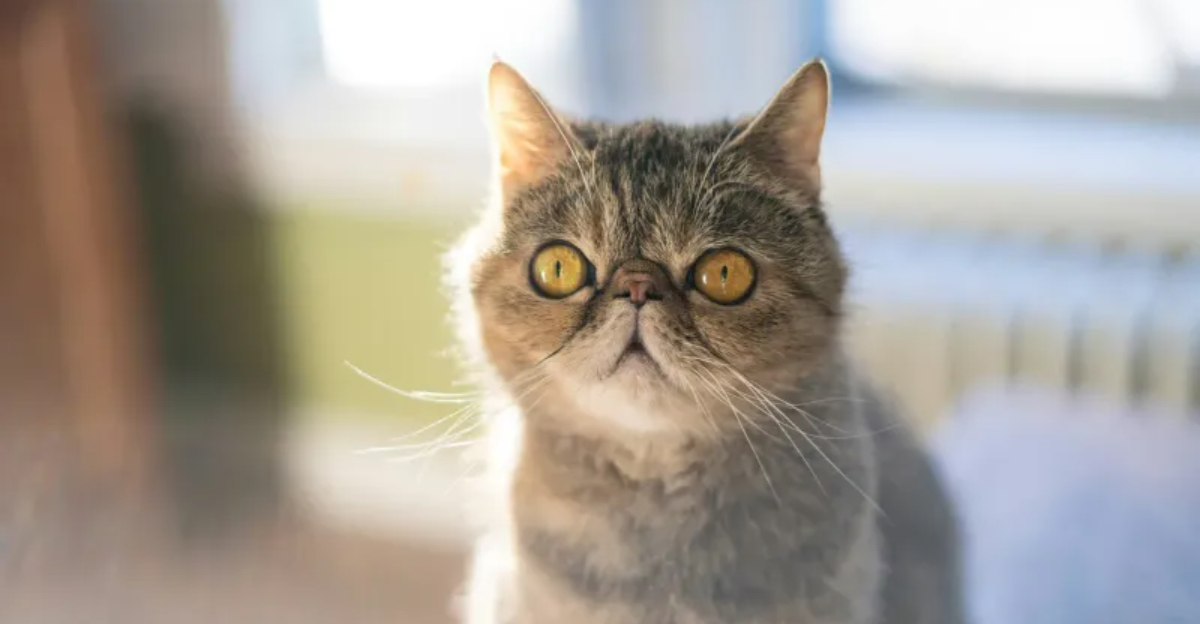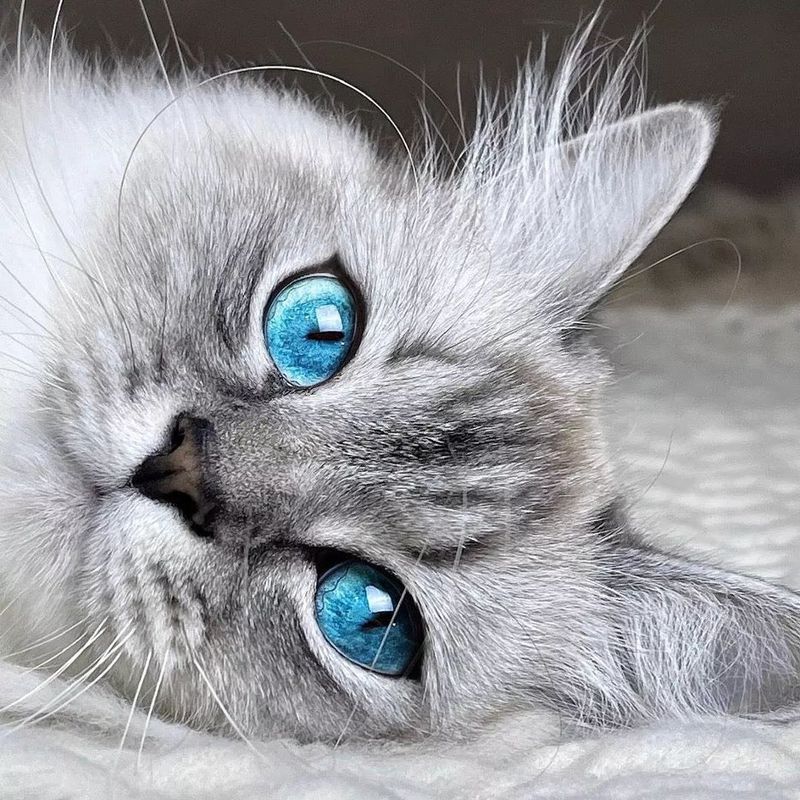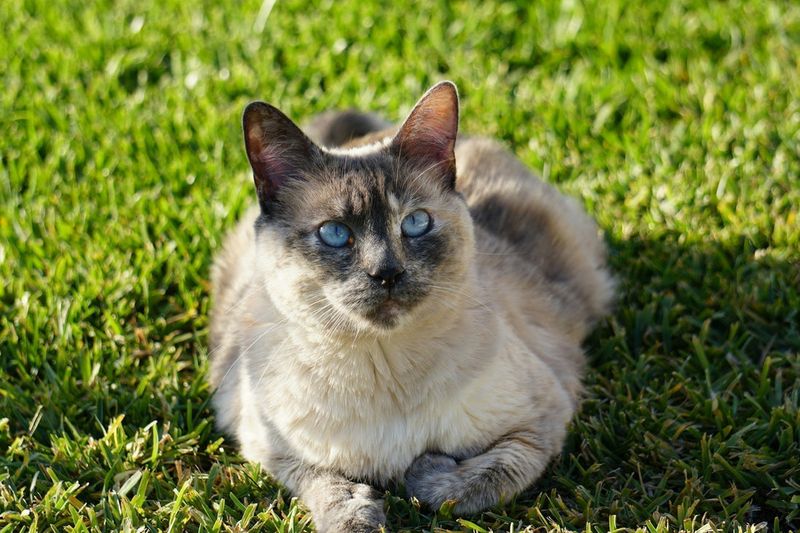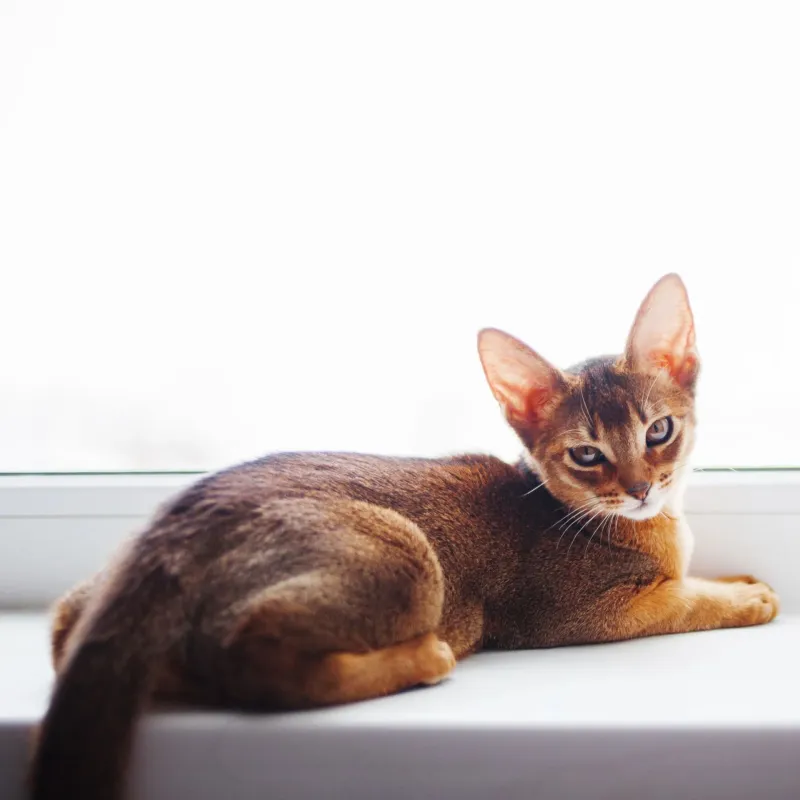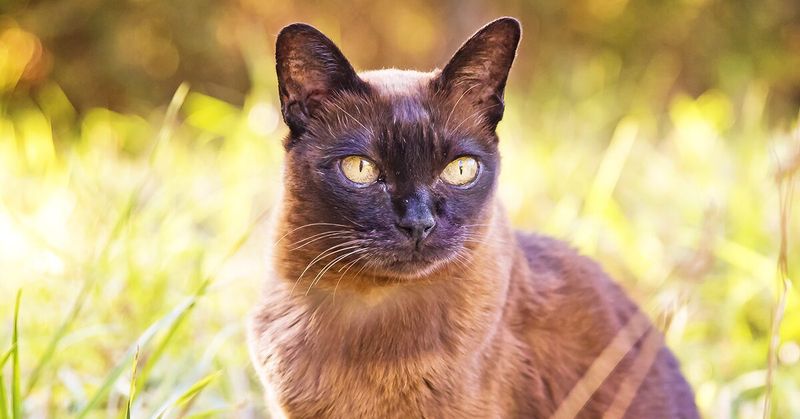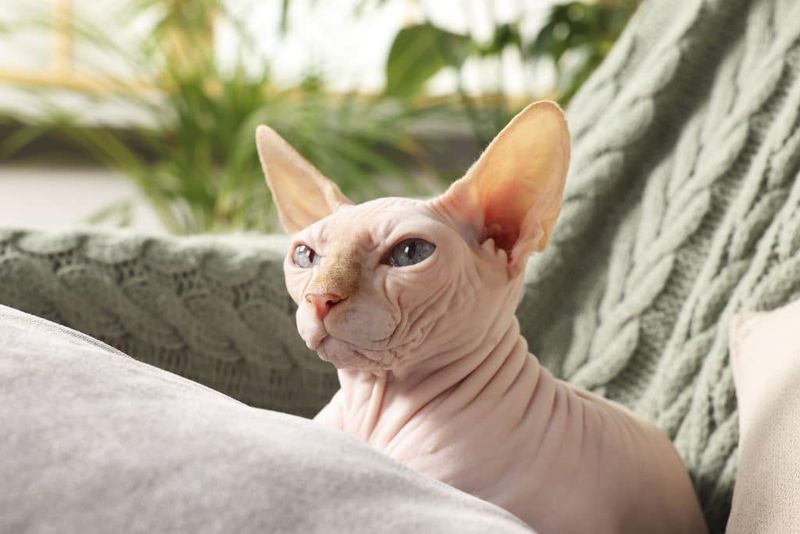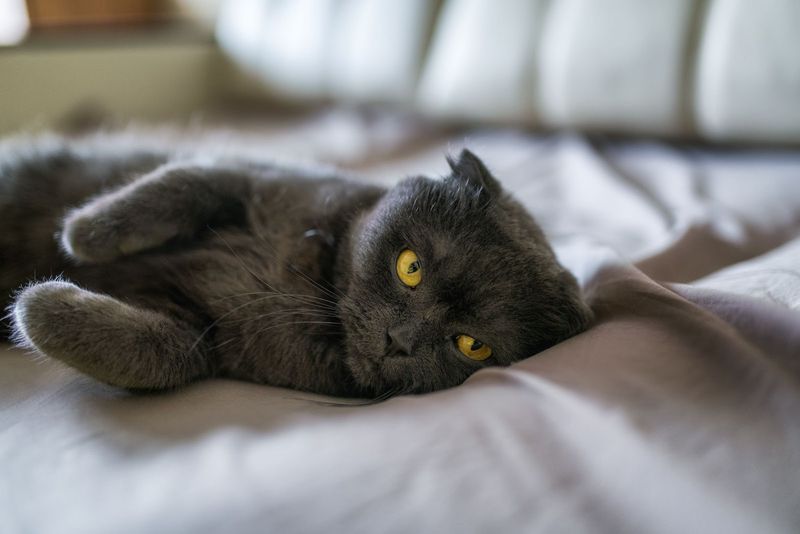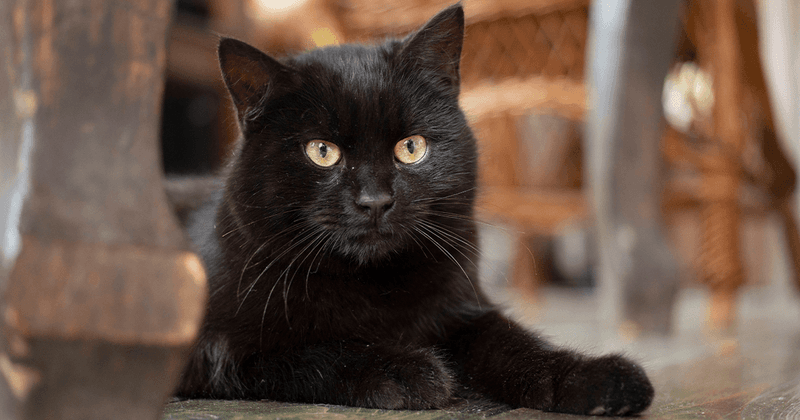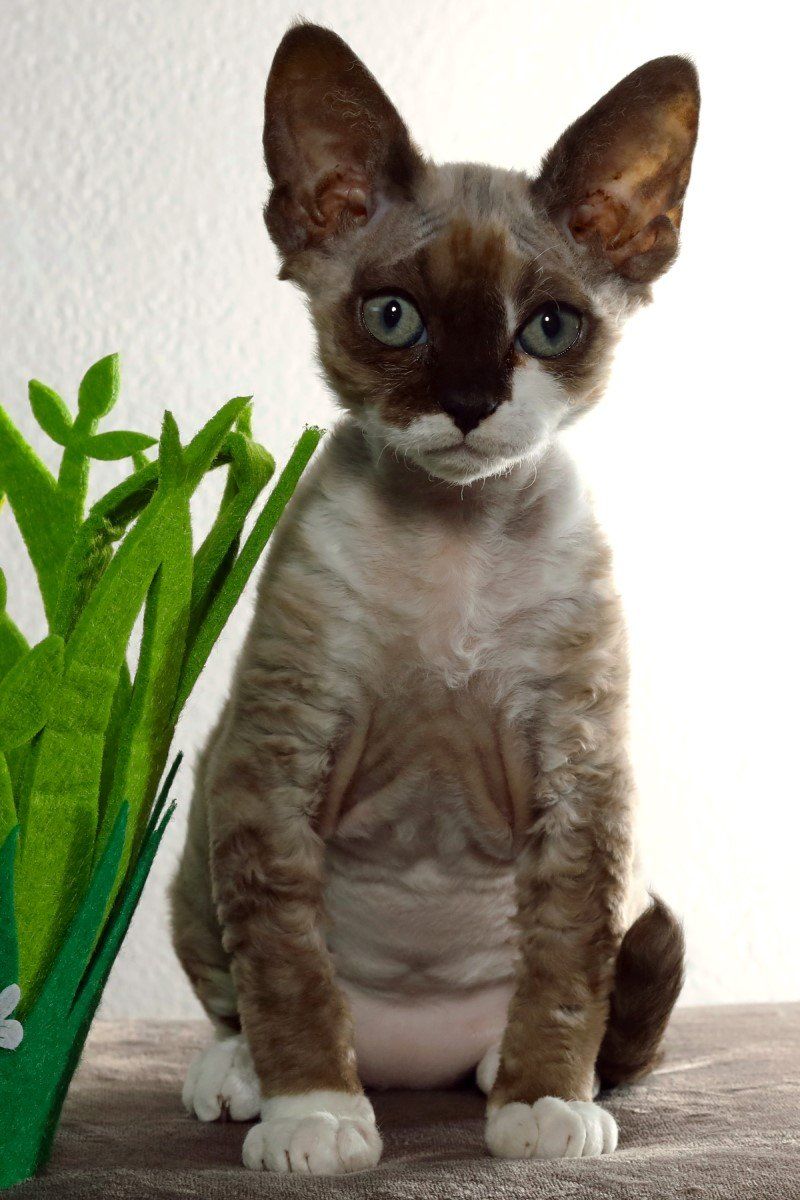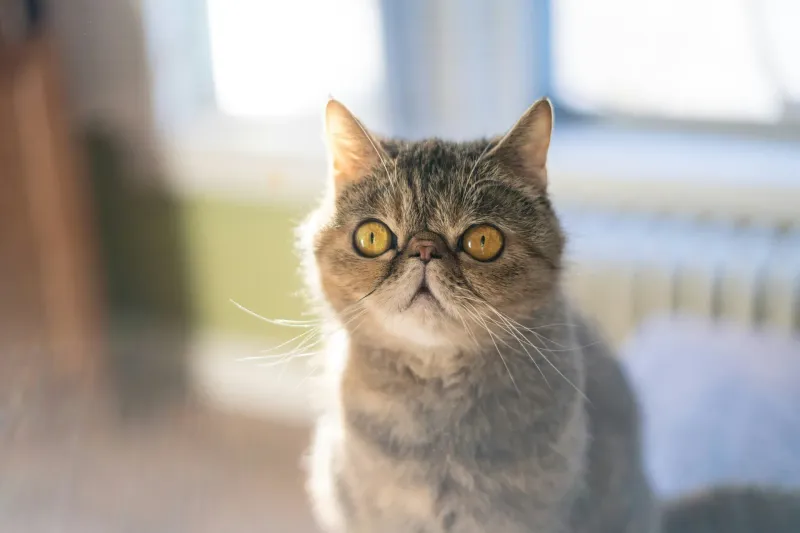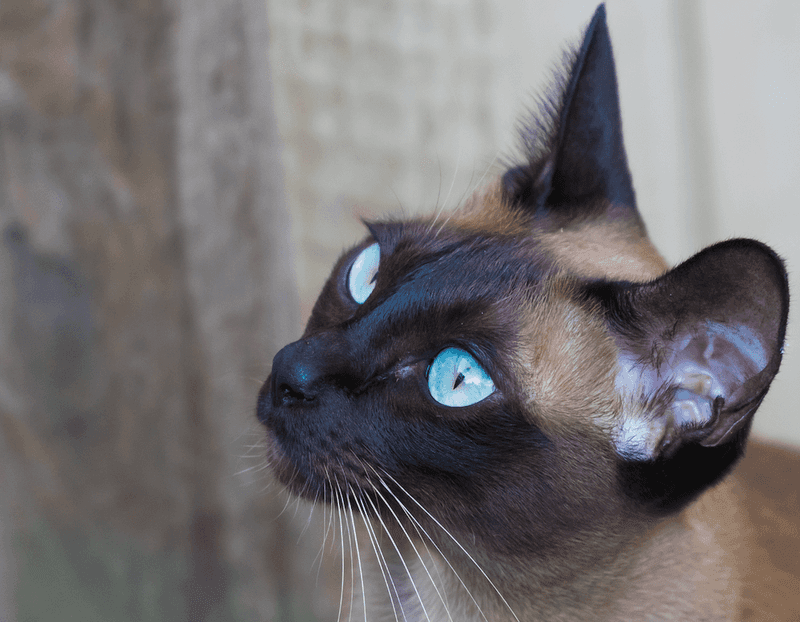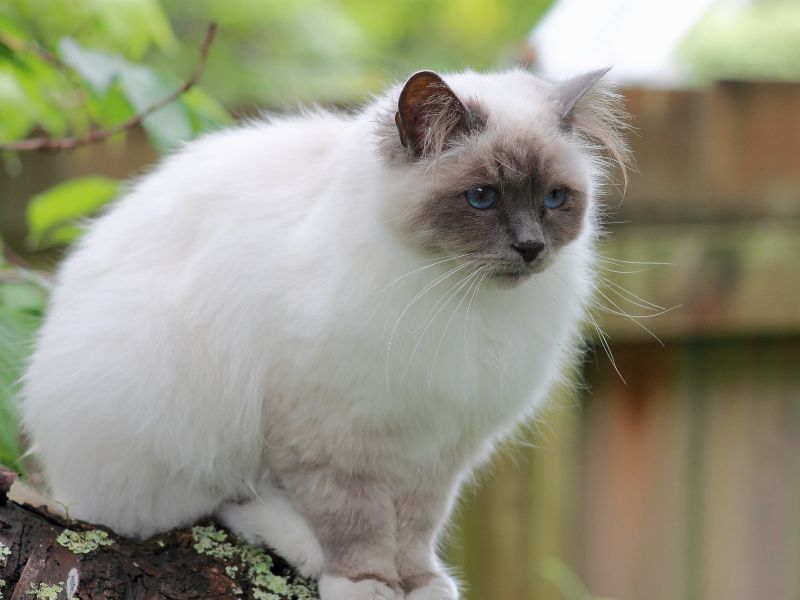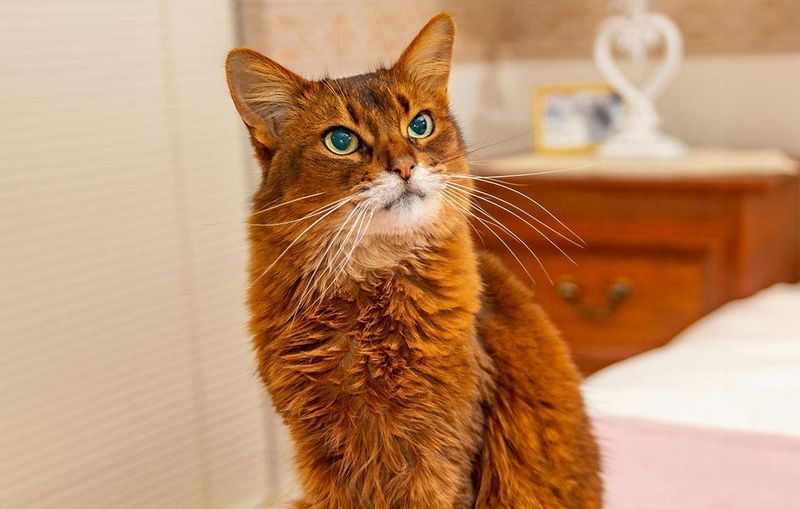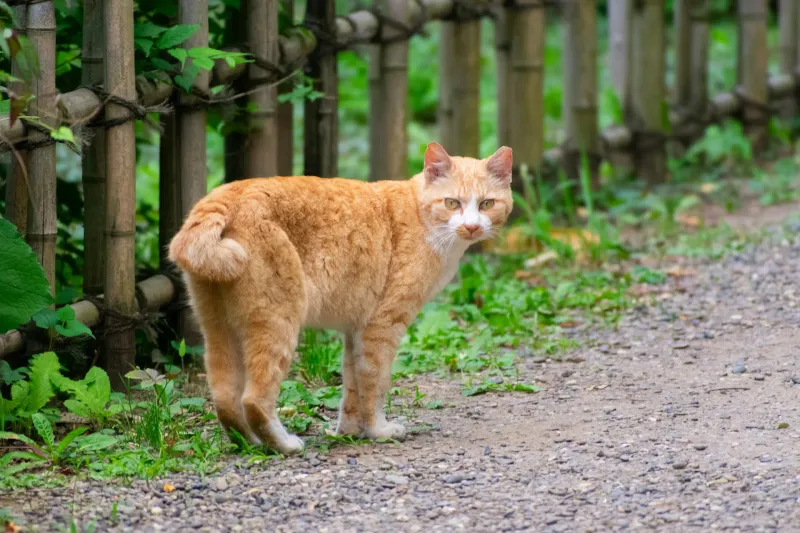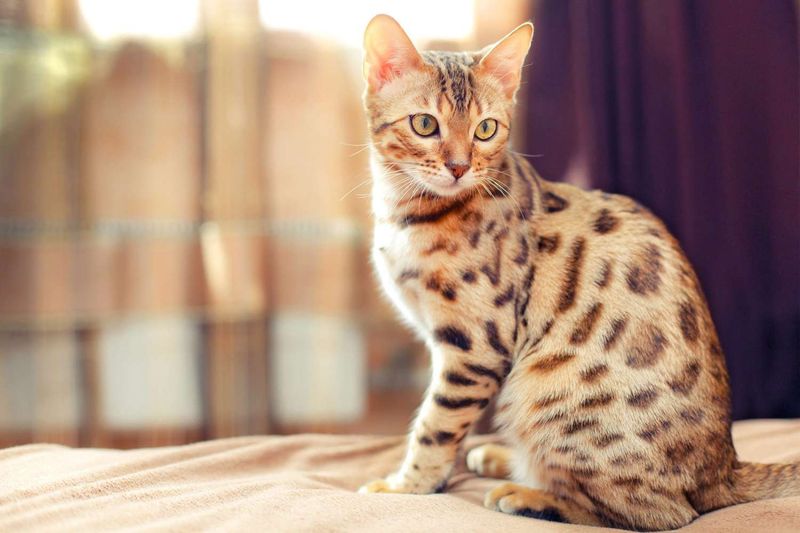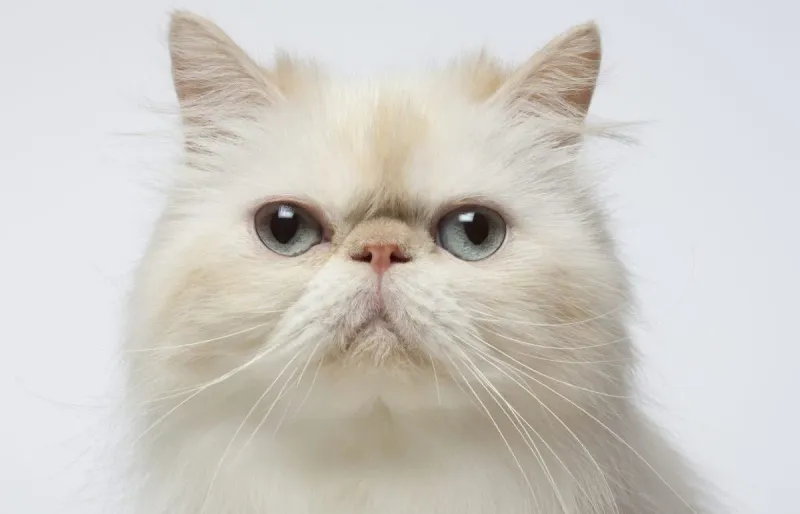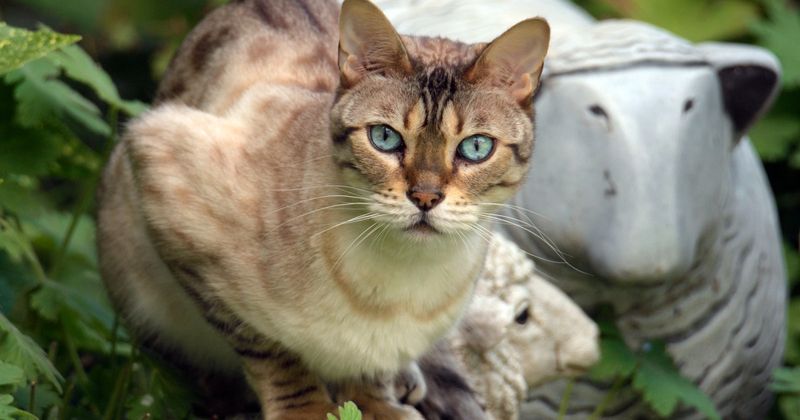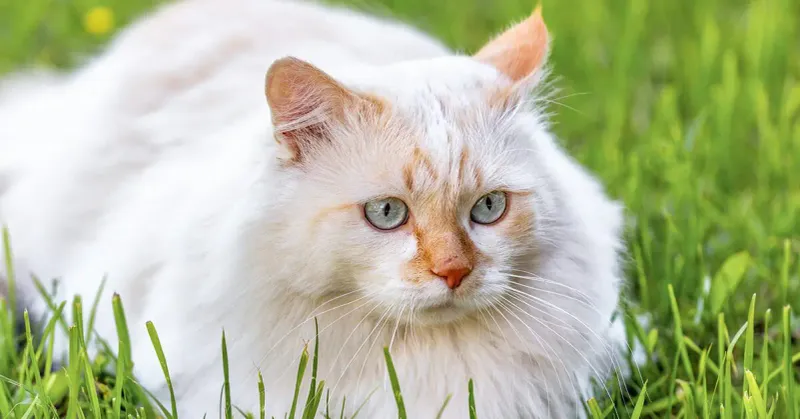📖 Table of Content:
Cats display a wide range of personalities, from deeply affectionate to reserved and independent. Some breeds are naturally drawn to human companionship, eagerly seeking cuddles and playtime. Others tend to be more aloof, valuing their personal space and freedom.
These varying temperaments reflect the diverse nature of feline behavior, shaped by breed, environment, and individual traits. Recognizing these differences is essential when considering which cat might best fit a particular home or lifestyle. Compatibility between owner and pet plays a key role in building a lasting, harmonious relationship.
Choosing a feline companion involves understanding both the cat’s social needs and the owner’s preferences. Some cats thrive on constant interaction, while others prefer a more relaxed connection. Awareness of these personality traits helps ensure a rewarding experience for both cat and owner.
1. Ragdoll
Known as “puppy cats” for their dog-like devotion, Ragdolls are famous for going limp when picked up – hence their name. These blue-eyed beauties follow their humans from room to room, greeting them at the door and flopping into laps whenever possible. Ragdolls thrive on companionship and don’t mind being carried around.
Their patient temperament makes them excellent pets for families with children or other pets. Unlike many cats, they rarely extend their claws during play and prefer gentle games to rough housing. Their affectionate nature is matched only by their striking appearance and plush, semi-long fur.
2. Maine Coon
Gentle giants of the cat world, Maine Coons combine impressive size with remarkably sweet dispositions. These natural-born companions chirp and trill rather than meow, communicating with their humans through a unique vocabulary of sounds. Despite their wild appearance with tufted ears and bushy tails, Maine Coons are incredibly sociable.
They excel at family life, getting along with children, dogs, and other cats without much fuss. Their intelligence makes them trainable for tricks and walking on leashes. Though large and powerful, these cats are famously careful with their strength, earning them the nickname “gentle giants” among cat enthusiasts.
3. Siamese
Vocal and opinionated, Siamese cats won’t let you forget they’re in the room. These sleek, color-pointed felines are known for forming intense bonds with their humans and expressing themselves through loud conversations that sound almost like crying babies. Siamese cats demand attention and involvement in your daily activities.
They’ll perch on your shoulder while you cook, help you read by sitting on your book, and sleep curled against you at night. Their intelligence makes them quick learners for tricks and games. Highly social, they suffer from loneliness when left alone for extended periods, often benefiting from having another cat companion when their humans are away.
4. Abyssinian
Athletic and playful, Abyssinians aren’t typical lap cats but show affection through constant involvement in your activities. These ancient-looking felines with ticked coats seem to be in perpetual motion, investigating everything with bright curiosity. Abys form strong bonds with their people, preferring to be where the action is. They’ll follow you everywhere, “helping” with chores and projects while maintaining a respectful distance.
Their expressive eyes seem to understand human emotions, often responding with comfort when their owners are sad. While not demanding of physical affection, these cats show their love through loyal companionship and entertaining antics that keep households lively.
5. Burmese
Burmese cats have earned the nickname “velcro cats” because of their tendency to attach themselves to their favorite humans. These medium-sized, muscular felines with glossy coats and gold eyes make it their mission to be involved in everything you do.
Originally from Thailand, Burmese retain their kitten-like playfulness well into adulthood. They’re known for riding on shoulders, curling up in laps, and sleeping under blankets with their people. Their voices are softer than their Siamese cousins, but they’re equally communicative. Burmese adapt well to different households, from quiet singles to bustling families, as long as they receive the attention and interaction they crave.
6. Sphynx
Don’t let their alien appearance fool you – Sphynx cats are among the most affectionate breeds in the feline world. These hairless wonders seek human contact not just for warmth but because they genuinely adore people.
Sphynx cats greet visitors enthusiastically and perform acrobatic tricks for attention. Their lack of fur means they feel like warm suede to the touch, and they appreciate the heat exchange that comes with cuddling. Highly social, they get along well with other pets and children. Their extroverted personalities make them poor candidates for solitude – a Sphynx would rather be at the center of family activity than alone in a quiet room.
7. Scottish Fold
Famous for their folded ears and owl-like appearance, Scottish Folds have personalities as endearing as their looks. These round-faced cats with folded ears adapt easily to different living situations and form strong bonds with their families. Scottish Folds enjoy interactive play but aren’t overly demanding of attention. They strike a perfect balance between independence and affection, happy to curl up beside you while you work or watch TV.
Their voices are soft and sweet, used sparingly to communicate needs. While they don’t typically climb onto shoulders or demand constant petting, their quiet companionship and occasional head bumps show their genuine attachment to their chosen humans.
8. Bombay
Often called “parlor panthers,” Bombay cats combine the exotic look of a miniature black panther with an incredibly friendly disposition. These glossy black felines with copper eyes were specifically bred to be companion animals and excel in this role. Bombays are known for greeting their people at the door and following them from room to room.
They form strong bonds with their families but aren’t typically one-person cats – they have enough affection to spread around. These cats enjoy being held and carried, often draping themselves across shoulders or laps. Their playful nature and intelligence make them entertaining housemates who adapt well to homes with children, other cats, or even cat-friendly dogs.
9. Devon Rex
Devon Rex cats with their elfin faces, large eyes, and curly coats are often called “monkey cats” for their playful antics and climbing abilities. These impish felines are devoted to their humans, forming deep bonds that last a lifetime. Devons are shoulder-riders who prefer to be wherever their people are. They’re known for their unusual voices – a combination of purrs, chirps, and coos that they use frequently to communicate.
Their intelligence makes them trainable for tricks and responsive to commands. Devons get along well with children and other pets, making them excellent family cats. Their need for companionship means they shouldn’t be left alone for extended periods.
10. Exotic Shorthair
Often described as “lazy man’s Persians,” Exotic Shorthairs combine the sweet face and personality of Persian cats with a more manageable short coat. These round-faced teddy bears are devoted companions who offer affection without demanding constant attention. Exotics are known for their calm, gentle demeanor and moderate activity level.
They enjoy playtime but are equally content to lounge beside their favorite humans, purring contentedly. Unlike some affectionate breeds, they’re not typically vocal or pushy about seeking attention. Their quiet devotion makes them excellent companions for seniors, apartment dwellers, or anyone who appreciates a peaceful yet loving pet presence in their home.
11. Tonkinese
Tonkinese cats combine the best traits of their Siamese and Burmese ancestors – the playfulness of the former with the affectionate nature of the latter. These medium-sized cats with striking aqua eyes are social butterflies who thrive on human interaction.
Tonks are known for their “helpful” nature, assisting with everything from computer work to cooking. They’re intelligent enough to learn tricks, play fetch, and even walk on leashes with proper training. Their voices are moderate – more melodious than Siamese but more talkative than Burmese. Tonkinese adapt well to various household situations but don’t appreciate being left alone for long periods. They often do best with either human companions who are home frequently or another friendly pet.
12. Birman
With their silky color-point coats and distinctive white “gloves” on all four paws, Birmans are known as “Sacred Cats of Burma” with a gentle, affectionate nature. These medium-sized, semi-longhaired cats combine playfulness with a calm demeanor that makes them excellent family pets. Unlike some active breeds, Birmans aren’t constantly in motion but prefer to be near their people, quietly observing activities.
When attention is offered, they respond with deep purrs and gentle headbutts. Their voices are soft and used sparingly, typically to request food or attention. Birmans adapt well to children and other pets, making them versatile companions for various household situations. Their moderate activity level suits both active families and quieter homes.
13. Somali
Often described as “foxes of the cat world,” Somalis are the long-haired cousins of Abyssinians with bushy tails and wild appearances that belie their deeply affectionate natures. These active, athletic cats form strong bonds with their humans while maintaining a playful independence. Somalis are interactive companions who enjoy participating in household activities. They’re known for their intelligence and curiosity, often figuring out how to open doors or cabinets to explore new areas.
While not typically lap cats, they show affection through following their people, playing together, and sleeping nearby. Their moderate voices are used conversationally rather than demandingly. Somalis adapt well to homes with children or other pets, especially those that can match their energy level.
14. Japanese Bobtail
For centuries, Japanese Bobtails—with their unique bobbed tails—have held a special place in Japanese culture, often regarded as lucky. These energetic and clever cats thrive on interaction, forming strong connections with their human families. Their vocalizations, ranging from chirps to melodic “songs,” are used frequently to express themselves.
They’re playful well into adulthood, enjoying interactive games and even learning to fetch. Their sociable nature extends to visitors and other pets – they rarely meet a stranger they don’t like. Japanese Bobtails thrive in active households where their intelligence can be challenged with puzzles and games. Their affectionate nature is balanced with enough independence that they don’t become overly demanding.
15. Bengal
Sporting coats that mimic miniature leopards, Bengals captivate with their wild looks and affectionate personalities. This breed originated from crossing domestic cats with Asian leopard cats, maintaining a striking appearance while being social and playful. Bengals are highly intelligent and tend to develop strong bonds, often staying close to their favorite humans throughout the day.
They’re known for their love of water – don’t be surprised to find a Bengal joining you in the shower! Bengals require both physical and mental stimulation to thrive. Their high energy makes them excellent companions for active households, but they can become destructive if bored. Despite their wild appearance, well-socialized Bengals are loving companions who enjoy interactive play with their humans.
1. Persian
Persians top the unfriendly list not because they’re mean, but because they’re typically aloof and independent. These flat-faced, long-haired cats prefer quiet environments and often retreat from loud noises or chaotic households. Unlike social breeds, Persians usually choose when and how they want to interact.
They may enjoy gentle petting but rarely seek out attention or follow their humans around. Their reserved nature can be misinterpreted as unfriendliness when it’s simply a preference for peace and routine. Persians can form bonds with patient owners who respect their boundaries, but they’re rarely the type to greet visitors or seek constant interaction. Their quiet, dignified demeanor suits calm households with predictable routines.
2. Russian Blue
The soft, velvety coat and brilliant green eyes of the Russian Blue create a look of graceful sophistication. Their shy nature can make them seem distant, but they are deeply loving toward their trusted humans. Stability and tranquility are important to this breed, as they are sensitive to loud noises and change.
They often hide when visitors arrive and may take hours or days to warm up to new people. Their sensitivity to mood makes them attentive to their chosen humans but wary of unknown situations. Russian Blues can make loving companions for patient owners who respect their need for space and predictability, but they’re rarely good candidates for homes with frequent visitors or chaotic activity.
3. Singapura
Despite their tiny size, Singapuras have outsized personalities that can surprise unprepared owners. These small cats with ticked coats and large eyes are intensely territorial and can be standoffish with strangers, earning them a spot on the unfriendly list. Singapuras typically bond strongly with one or two people while remaining aloof or even defensive with others.
They’re known for their stubborn independence and resistance to handling they haven’t initiated. Their high intelligence makes them manipulative – they quickly learn how to get what they want from their chosen humans. While they can form deep attachments, Singapuras generally prefer observation to interaction and may become stressed in overly social environments or homes with young children.
4. Chausie
Created by crossing domestic cats with jungle cats, Chausies retain wild instincts that can make them challenging companions. These large, athletic cats with ticked coats and tall ears need significant space and stimulation, often becoming destructive when their needs aren’t met.
Unlike more domesticated breeds, Chausies can be unpredictable with strangers and selective about physical affection. They’re highly territorial and may not adapt well to multi-pet households. Their intelligence and energy require experienced owners who understand their wild heritage. Chausies can form bonds with dedicated humans who respect their independence, but they’re rarely suitable for first-time cat owners, families with young children, or those seeking a cuddly companion.
5. Turkish Angora
Silky white coats and striking heterochromatic eyes—often one blue and one amber—make Turkish Angoras stand out in any room. Known for their strong-willed and dominant nature, these cats can be quite selective about whom they accept. They tend to be wary or even dismissive of unfamiliar people and prefer stability in their surroundings.
They’re known for their determination to get their way and can become destructive when thwarted. Their high intelligence makes them manipulative – they quickly learn which behaviors get results. While they can form intense bonds with chosen people, Turkish Angoras generally prefer to dictate the terms of interaction and may reject affection that doesn’t suit their mood or timing.
